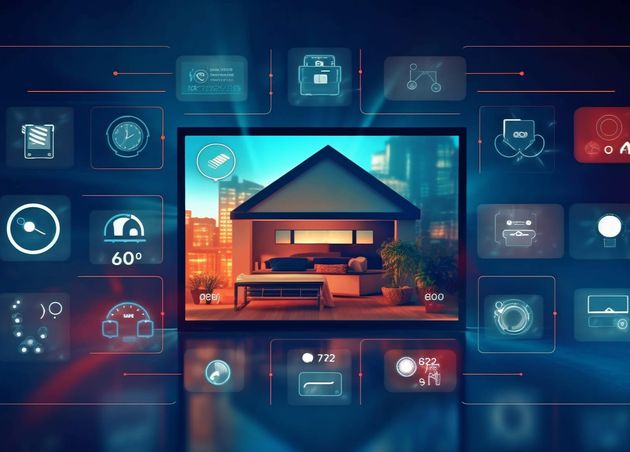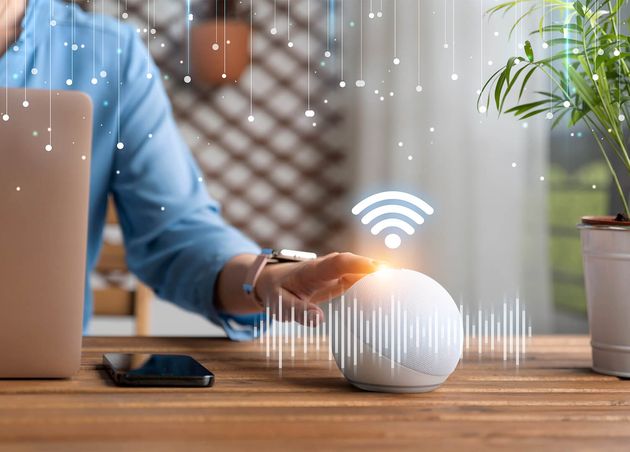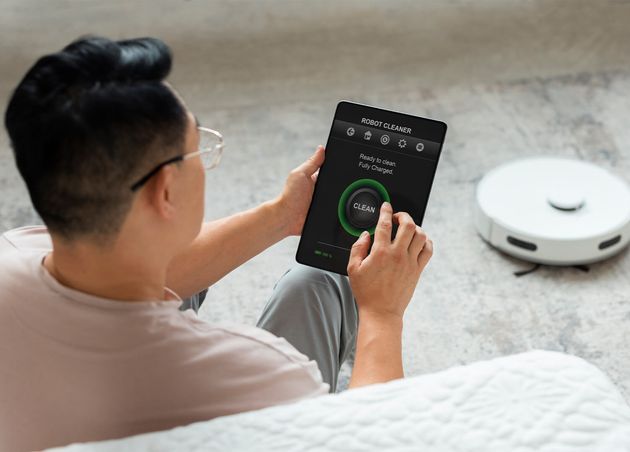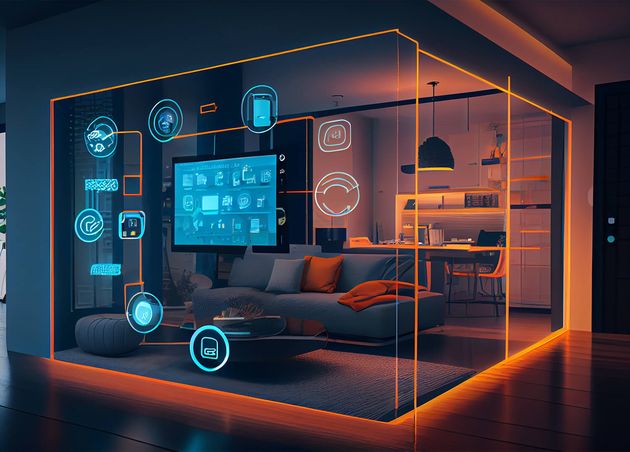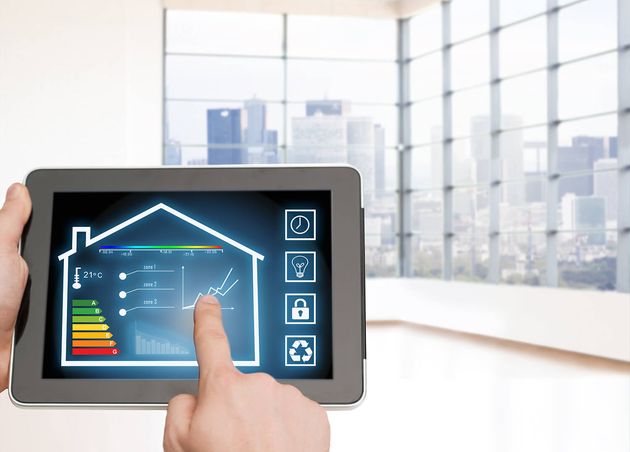From Concept to Reality: The Smart Home Revolution and Beyond
Humanity has entered the information age due to the rapid advancement of science and technology. Because of these advancements, people now live in more convenient, safer, and more comfortable homes. This has led to the emergence of smart homes and buildings. To handle centralized or off-site operations, a smart home uses a home network of bus devices connected to network monitoring and control implementation information.
The current trend in smart house development is a shift from centralized to distributed control. Currently, smart homes use four common wireless technologies: WiFi, Z-Wave, Bluetooth, and Zig-bee. WiFi and Zig-bee technologies are the most competitive.
💻 Tech Fact!
By 2025, 478.2 million Smart Homes are the anticipated figures on the global market.
Building a Smart Home: Essentials and Considerations
The newest trend among the younger generation of homebuyers is smart homes. The Internet of Things (IoT) powers these homes, which are designed to provide homeowners with more comfortable living and control over their property.
Smart TVs, security cameras, door locks, smart lighting systems, and smart speakers like Amazon Echo/Alexa, etc. are a few of the well-loved smart home appliances. Homeowners can now operate these electrical and electronic gadgets using voice commands or a smartphone, all thanks to automation. These "smart homes" not only automate duties to make life more convenient, but they also help save money and energy.
A smart home must first have dependable high-speed internet to operate properly. To operate smart devices in a home with upgraded technology, an unlimited plan is optimal. When selecting an internet package, bear in mind that you will require internet access for everyday activities like gaming, streaming videos, and office work in addition to the smart devices in your home. When choosing a broadband package for smart homes, keep in mind that all of these require a significant quantity of data.
Ensuring Seamless Connectivity: The Role of WiFi in Smart Homes
An all-encompassing Wi-Fi connection is necessary for the seamless operation of a smart home. This must extend to the hours of high internet usage or peak times. When choosing a broadband plan, choose Fibernet technology from a reputable internet service provider with top-notch download speed options. Uninterrupted service reliability is an additional consideration.
Maximizing Performance: The Importance of High-Speed Internet in Smart Homes
It is essential to have high-speed broadband internet for your smart devices to function at their best. Most smart home equipment does not require a lot of data; however, gadgets with video capabilities use a lot, including video doorbells and security cameras.
Safeguarding Your Smart Home: Ensuring Secure Internet Connectivity
It is crucial to keep your internet connection safe from malware and hackers in this day of rising cybercrimes. For your monitoring systems and Wi-Fi connection, use secure passwords. Additionally, you should be on the lookout for unauthorized data usage or modifications to security settings.
A master home automation controller, a smart home hub, controls every device, including thermostats, lighting, security systems, and appliances. This hardware hub, which can sense, analyze, and transmit wirelessly, serves as the brains of the smart home system. It unifies all the different apps into a single, remotely controllable smart home app for homeowners.
Google Home, Wink Hub, and Amazon Echo are a few examples of smart home hubs. Certain smart home gadgets rely on wireless protocols like Zigbee or Z-Wave, while many others choose to connect to the smart home network using Wi-Fi and Bluetooth.
Transform Your House into a Smart Home: Step-by-Step Guide
Converting your house into a smart home can be approached gradually or all at once. Regardless of your chosen pace, there are essential steps to prepare for the seamless integration of smart devices and appliances.
#1 Ensure a Strong Foundation: Invest in WiFi Upgrade
Upgrade your WiFi infrastructure to support the connectivity demands of smart home devices. Confirm your WiFi signal is robust enough to facilitate seamless data sharing among devices, especially in larger homes. Consider investing in multiple routers for extended coverage and enhanced connectivity.
#2 Explore Available Options: Conduct Thorough Research
Familiarize yourself with the diverse range of smart home gadgets and systems available. Conduct thorough research to understand various devices' features, functionalities, and compatibility before making informed decisions.
#3 Determine Needs that Align with Your Lifestyle
Evaluate your specific requirements, lifestyle, and preferences to determine which aspects of your home would benefit most from smart technology. Prioritize areas that require immediate attention and select smart home systems, appliances, and gadgets that align with your needs and lifestyle.
#4 Adapting to Existing Homes: Consider Retro Options
Smart technologies can be seamlessly integrated whether you reside in a newly constructed home or an older property. Retrofitting smart devices into existing homes allows for infrastructure modernization and the incorporation of cutting-edge automation solutions.
#5 Explore Automation Technologies and Choose the Right Protocols
Familiarize yourself with prevalent home automation communication technologies such as Z-Wave and Zigbee. These technologies utilize short-range, low-power radio transmissions and mesh network capabilities to link smart home systems efficiently.
#6 DIY or Packaged Solutions: Tailor-Made or Off-the-Shelf
Explore building custom smart home systems using platforms like Raspberry Pi or opt for packaged smart home kits with all necessary components for easy installation and setup. Choose the approach that best aligns with your technical proficiency and project requirements.
Smart Home Best Practices: Key Actions for Homeowners
Configuring a smart home may present challenges, but homeowners can navigate the process effectively by considering the following essential actions:
#1 Ensure a Solid Foundation: Invest in Reliable Internet
Prioritize the acquisition of a robust and dependable internet connection, as it forms the backbone of smart home connectivity. Opt for quick and reliable access to support seamless communication between devices.
#2 Select the Right Hub: Centralize Control
Choose a smart home hub that truly aligns with your automation needs and preferences. A hub capable of managing all devices remotely offers comprehensive control, while virtual assistants like Amazon Echo provide voice-activated functionality for added convenience.
#3 Build a Better Foundation: Start with the Basics
Begin automating tasks around the house by focusing on fundamental smart home accessories such as switches, smart plugs, and bulbs. These easy-to-install devices facilitate quick setup and operation, laying the groundwork for more advanced automation.
#4 Prioritize Protection: Secure Your Gadgets
Implement robust and effective security measures to protect your IoT and smart home devices from unauthorized access. Set up strong passwords and utilize multifactor authentication to safeguard sensitive data and prevent any potential breaches.
#5 Enhance Your Smart Home Experience: Expand Your Device Portfolio
Gradually introduce additional gadgets such as cameras, security systems, and video doorbells as you become more comfortable with the smart home setup. Explore the potential of triggered and timed events to automate routine tasks and enhance convenience.
#6 Leverage Intelligent Solutions: Embrace Artificial Intelligence
Embrace integrating artificial intelligence and machine learning technologies into your smart home systems. Virtual assistants (e.g., Google Home, Amazon Echo, etc.) adapt to user preferences and routines, customizing the smart home experience accordingly.
Advancing Infrastructure: The Role of Smart Buildings
Smart buildings are a category distinct from smart homes, although every smart home falls under the umbrella of a smart building. Various types of structures, including large and small office buildings, apartment complexes, skyscrapers, multi-tenant offices, and homes, are adopting IoT technologies to achieve goals such as reducing energy costs, improving building efficiency, minimizing environmental impact, enhancing security, and increasing occupant satisfaction.
Many features found in smart homes, such as energy and lighting management, HVAC control, security systems, and building access systems, are also implemented in smart buildings. For example, smart buildings can utilize sensors to monitor room occupancy levels and adjust temperature settings accordingly, optimizing energy usage. If a conference room is crowded, the system can activate cooling mechanisms, and when employees leave for the day, it can adjust settings to conserve energy.
Smart Buildings Framework: AI and Predictive Maintenance
The framework for smart buildings is increasingly reliant on AI and machine intelligence. Integration with the smart grid allows for seamless communication between intelligent building components and the electrical grid, enabling more efficient energy distribution, proactive maintenance, and expedited handling of power outages.
Predictive maintenance is a key benefit of smart buildings, enabling managers and owners to anticipate maintenance needs and address them preemptively. For instance, restroom supplies can be restocked promptly based on alerts from usage sensors detecting low levels of soap or paper towels. Similarly, maintenance issues with lighting, elevators, and refrigeration systems can be forecasted and addressed before they escalate.
💻 Tech Trivia!
Globally, there are about 300 million smart homes.
Embracing the Future: The Evolution of Smart Homes and WiFi Technology
Using WiFi technology to operate home systems on smartphones will become a significant aspect of people's lives as smart homes continue to evolve and WiFi technology continues to develop. An increasing number of businesses are getting involved in the development of smart home appliances.
Smart homes simplify tasks by utilizing technological advancements and innovation. They have completely changed how people live, use energy, and interact with household appliances. Examples of these innovations include scheduling items to complete chores at specific times or using your phone to manage applications.
The possibilities and combinations in the fascinating new field of smart home technologies are seemingly limitless. The services and how they affect your daily life will grow along with the growth of the smart home industry.
Recommended for you
Beer Garden Sukhumvit 19: An Excellent Hub in Downtown Bangkok
Tle (Hungry Bear)
The Bizarre World of Coming Out As A Bisexual in Thailand
Jordan (Bisexual Bear)
Kuroda Japanese Restaurant: A Memorable Eating Experience in Ayutthaya
Tle (Hungry Bear)
Condominiums in Bangkok Guide: Everything You Need to Know
Lifestyle Bear
Golf in Thailand: What to Wear and Other Essential Tips
Dr. Theodore (Professor Bear)



